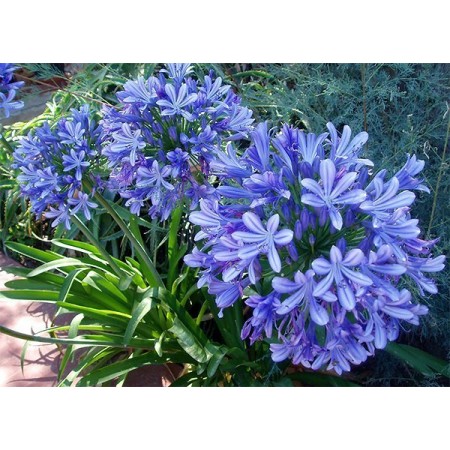Agapanthus cultivation

Agapanthus is an exotic plant whose peduncle can reach a length of up to 1 meter! In total, there are about 150 shades of various plants present in one inflorescence. In addition to its attractive appearance, agapanthus has some useful properties, and now we will analyze the rules for caring for this cut flower so that he can feel at home as comfortable as possible.
Lighting and temperature
No matter where you plan to grow agapanthus (in the garden or in the house), he will need a large amount of diffused light. In dark places, the flower will not feel too comfortable, so the south-west and south-east sides will be the best choice.
Do not forget that direct sunlight can cause irreparable harm to the plant. It is recommended to provide protection on the windows or in the garden, so that during the summer heat the flower does not receive multiple burns due to too active sun heating.
Agapanthus, unlike their counterparts, are very comfortable in keeping cool. For them, you can not create specific temperature conditions - it is enough to maintain it within 10-12 degrees of heat. If the temperature in the house is much higher, it is recommended to carry out additional procedures for spraying leaves and buds with warm room water.
In the garden during wintering, you should artificially insulate the flowerpot with agapanthus, covering it with a film. A layer of sand or sawdust can be poured on top, which will become a natural defense of the plant from severe winter frosts. Most often, flower growers move the soil with the flower to the cellar for several months, since it does not need care during the dormant period.
Watering, humidity and top dressing
In the spring-summer period, agapanthus needs regular, plentiful watering. From the beginning of spring to mid-autumn, the soil should be moistened at least twice a day, and with the onset of winter you can completely forget about this procedure. The fact is that from December to February, agapanthus is at rest, gaining strength before the next flowering season and does not consume moisture or minerals from the ground.
If the air in the room or on the street is not too saturated with moisture, then you can not be afraid that the agapanthus will suffer from this somehow. This flower tolerates drought, so that additional leaves should be sprayed only in the hottest period of the year.
As for the introduction of mineral fertilizers into the soil, they should be added exclusively during the growing season. The optimum time for this is the period from April to October, while feeding should be applied to the soil no more than once every 10 days.